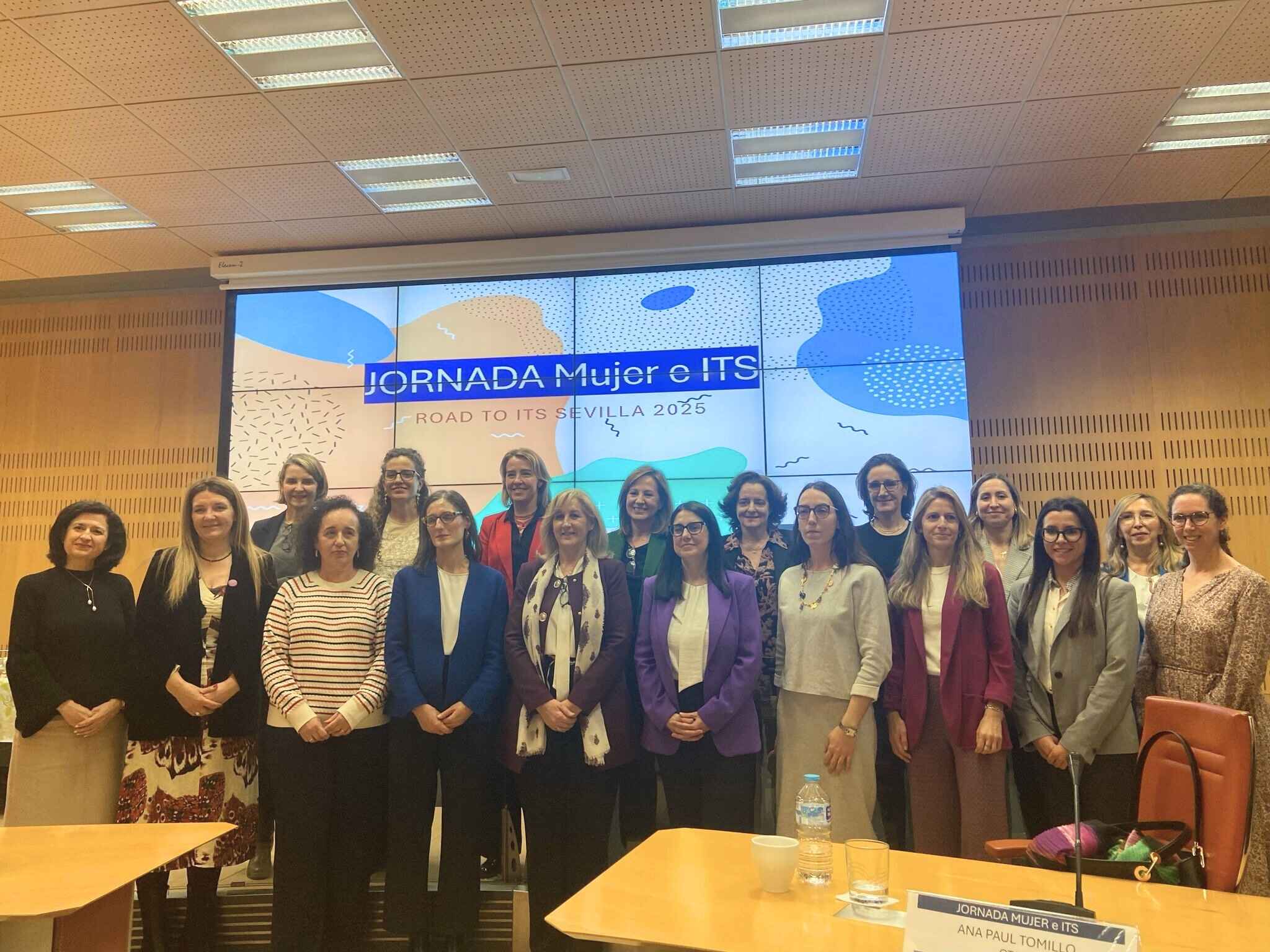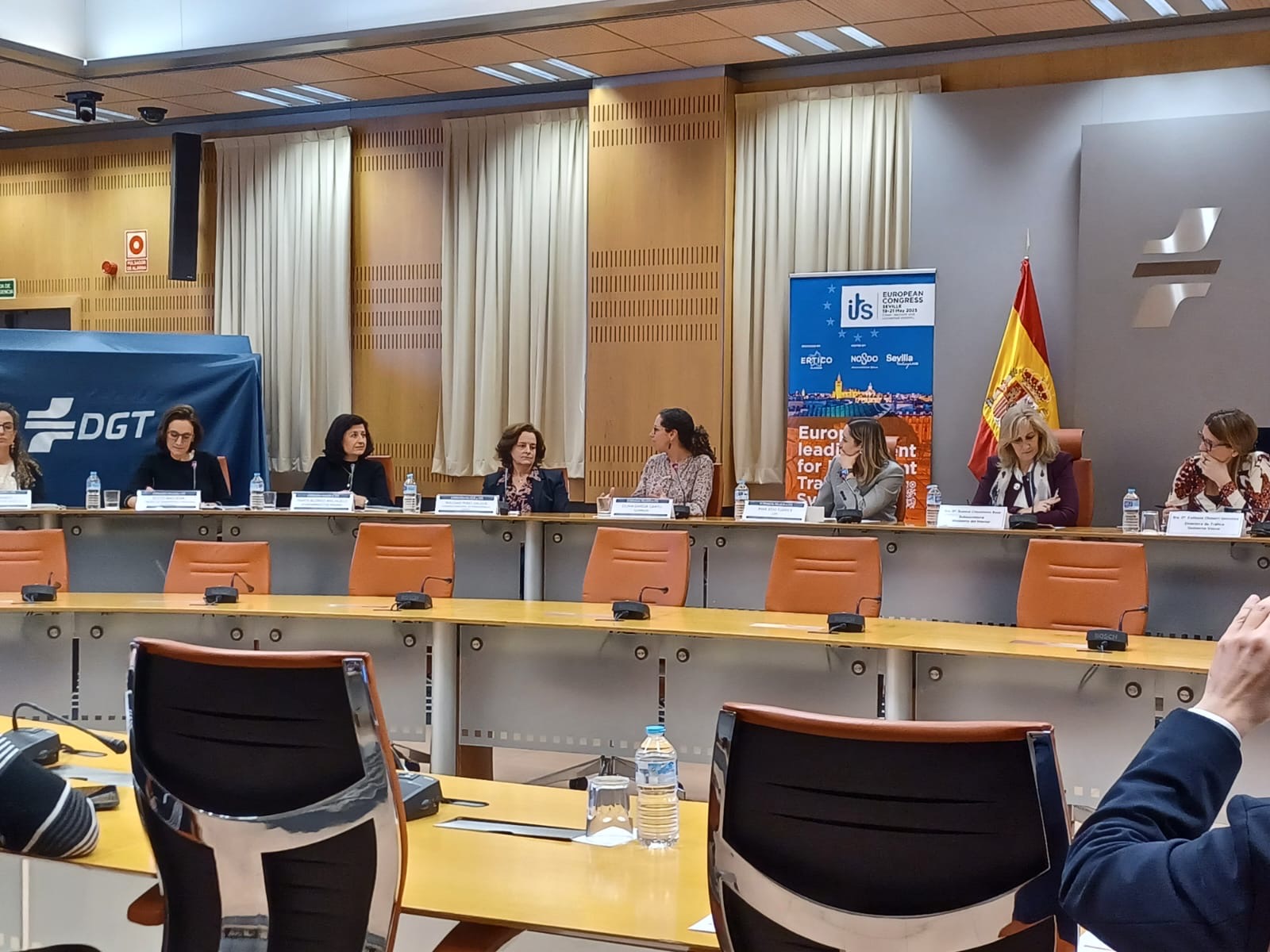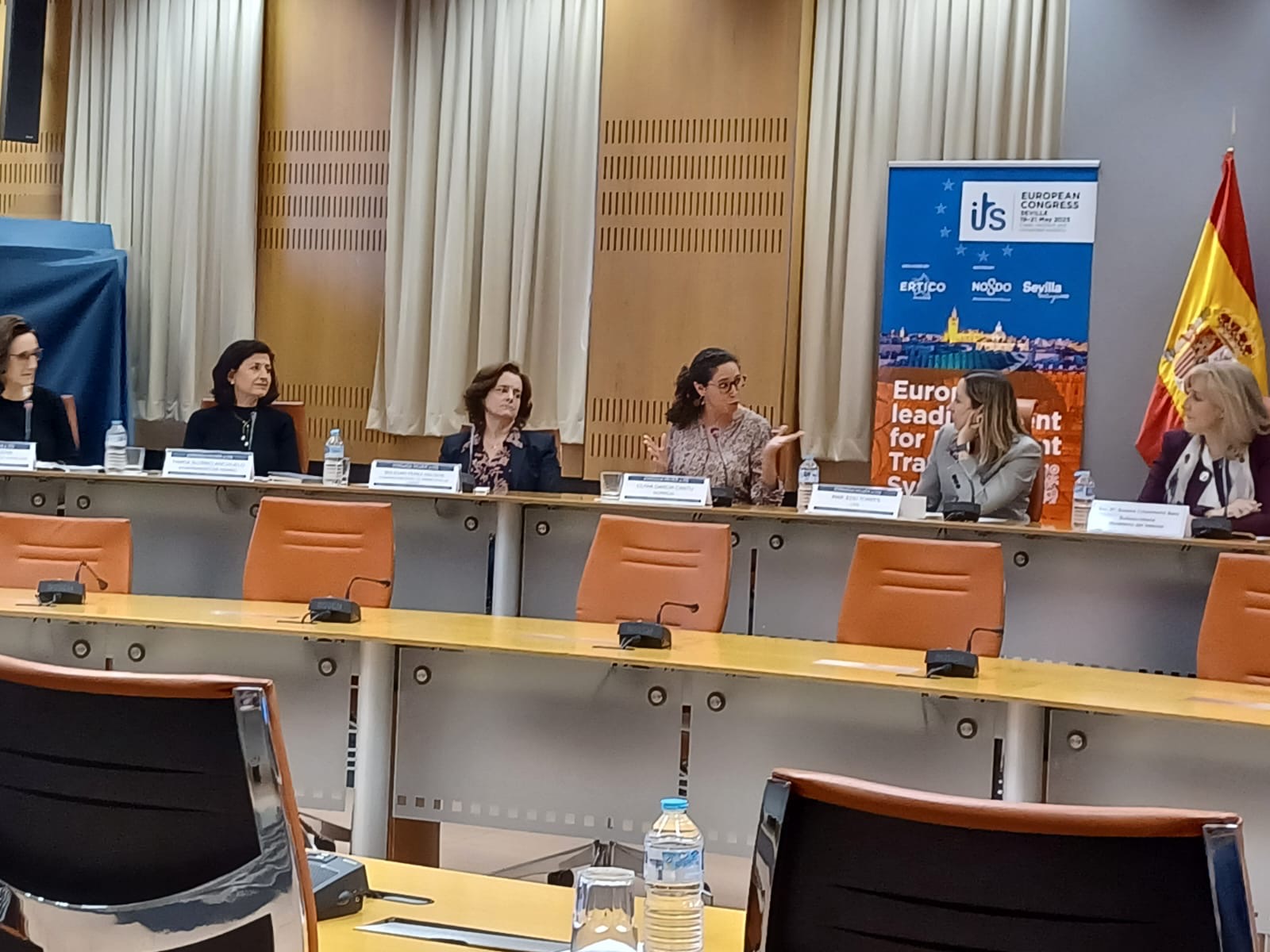Nommon takes part in the ‘Women and ITS’ event

Oliva García Cantú Ros, R&D Director at Nommon, participated in the first panel discussion of the event, focused on technologies and applications of Intelligent Transport Systems.
On 11 March, the Spanish Dirección General de Tráfico (DGT), in collaboration with ITS España and ERTICO, organised the ‘Women and ITS’ event, held as part of the activities leading up to the European ITS Congress, which will take place in Seville from 19 to 21 May. The event brought together professionals from the transport and mobility sectors to discuss the challenges and opportunities that Intelligent Transport Systems (ITS) offer for traffic management, road safety, and the design of more accessible and sustainable transport systems, infrastructures, and urban environments. The event highlighted the importance of integrating a gender perspective into mobility solutions, the role of women in developing innovative technologies to drive sustainable transport, and the need to showcase female leadership in a sector where women remain underrepresented.
Oliva García Cantú Ros, R&D Director at Nommon, was invited to take part in the first panel discussion of the event, “Applications of Intelligent Transport Systems,” moderated by Rocío Báguena, Director of the Transport Studies and Technology Division at the Spanish Ministry of Transport and Sustainable Mobility. Oliva contributed to the discussion within the big data and mobility segment.
Big data and artificial intelligence to better understand mobility patterns
During her presentation, Oliva explained the role of new data sources and technologies such as big data and artificial intelligence (AI) in monitoring and optimising urban and interurban mobility. She highlighted how geolocated data from mobile networks and other big data sources allow for a better understanding of mobility patterns across different population segments. This, in turn, helps design more inclusive and accessible services tailored to the actual needs of different groups. For example, data show that women use public transport more frequently and tend to make more complex trip chains, often including multiple stops related to caregiving responsibilities — an aspect that should be taken into account when planning transport systems.
The panel discussion also featured several experts from both public and private transport and mobility institutions. Carla Tomás (DGT) emphasised the importance of increasing the visibility of women in the sector to inspire future professionals; Marta Alonso (Madrid City Council) outlined how ITS contributes to improving urban and interurban traffic management; Mar Edo (CPS) shared various experiences on predictive models and intelligent traffic optimisation systems; Ana Paul (CTAG) discussed advancements in autonomous driving and their implications for road safety; Eluska Renedo (Gipuzkoa Transport Authority) explained different strategies for improving public transport; and Soledad Pérez-Galdós (Madrid Regional Transport Consortium) analysed the impact of the Mobility-as-a-Service model on transport accessibility and sustainability.
Technologies to enhance road safety
The second panel discussion of the event focused on technologies aimed at improving road safety. Participants included Ana Luz Jiménez Ortega (DGT), Marta Martínez (DGT 3.0), Cristina Zamorano (Abertis Autopistas), Radines López (Asturias Transport Consortium), and Sara Gutiérrez (GMV), who discussed strategies for incorporating advanced technologies to enhance road safety across Spain, the crucial role of public transport in road safety policies, and how AI is being integrated into vehicles to prevent accidents.
Nommon is also involved in various initiatives to develop innovative solutions that improve road safety. One of these is SOTERIA, a European research project aimed at designing tools that promote safe and sustainable travel for vulnerable road users, such as young people, the elderly, pedestrians, cyclists, and motorcyclists. As part of this project, Nommon contributes its expertise in analysing traveller behaviour and demand forecasting to better identify the mobility needs of these groups and the associated road safety risks.


